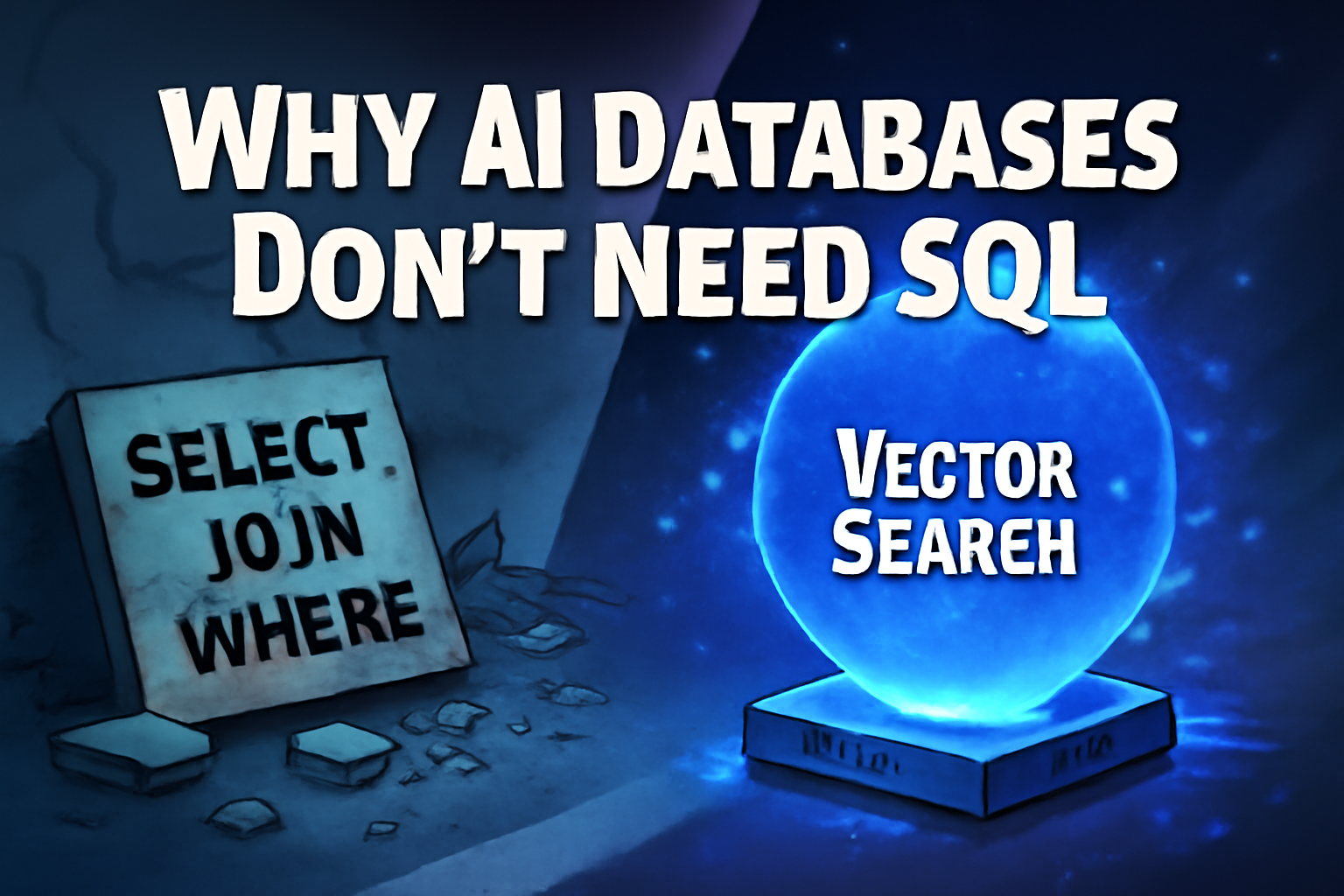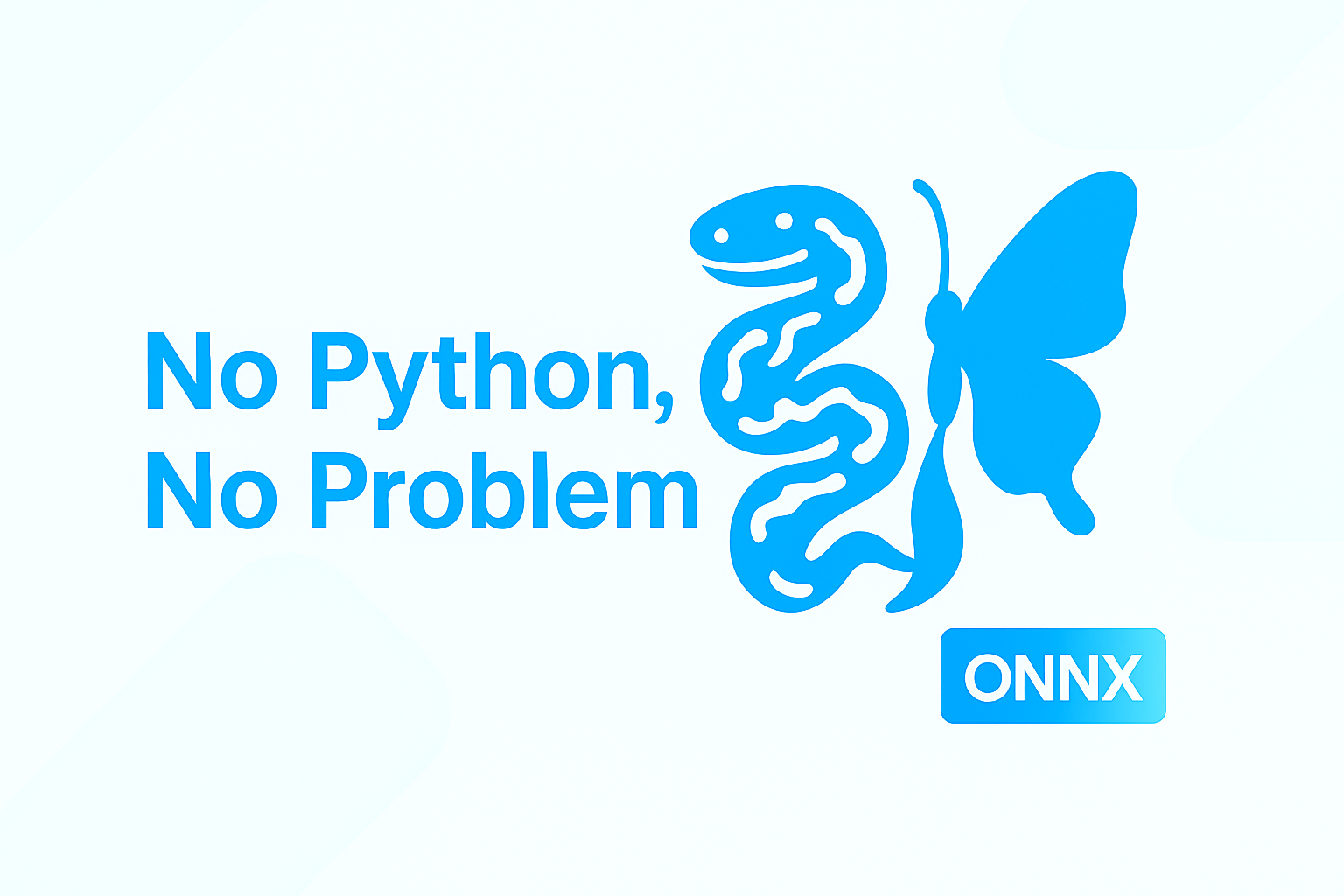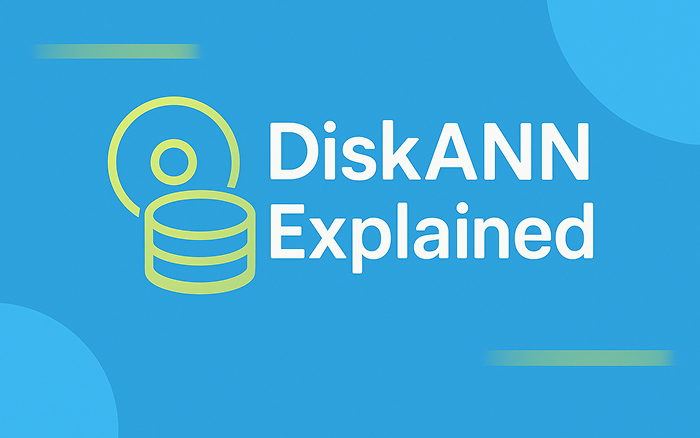Why AI Databases Don't Need SQL
For decades, SELECT * FROM WHERE has been the golden rule of database queries. Whether for reporting systems, financial analysis, or user behavior queries, we’ve grown accustomed to using structured language to precisely manipulate data. Even NoSQL, which once proclaimed an “anti-SQL revolution,” eventually caved and introduced SQL support, acknowledging its seemingly irreplaceable position.
But have you ever wondered: we’ve spent over 50 years teaching computers to speak human language, so why are we still forcing humans to speak "computer"?
Whether you like it or not, here’s the truth: SQL is destined for decline in the era of AI. It may still be used in legacy systems, but it’s becoming increasingly irrelevant for modern AI applications. The AI revolution isn’t just changing how we build software—it’s making SQL obsolete, and most developers are too busy optimizing their JOINs to notice.

Natural Language: The New Interface for AI Databases
The future of database interaction isn’t about learning better SQL—it’s about abandoning syntax entirely.
Instead of wrestling with complex SQL queries, imagine simply saying:
“Help me find users whose recent purchasing behavior is most similar to our top customers from last quarter.”
The system understands your intent and automatically decides:
Should it query structured tables or perform a vector similarity search across user embeddings?
Should it call external APIs to enrich the data?
How should it rank and filter the results?
All completed automatically. No syntax. No debugging. No Stack Overflow searches for “how to do a window function with multiple CTEs.” You’re no longer a database "programmer"—you’re having a conversation with an intelligent data system.
This isn’t science fiction. According to Gartner predictions, by 2026, most enterprises will prioritize natural language as their primary query interface, with SQL changing from a “must-have” to an “optional” skill.
The transformation is already happening:
✅ Zero syntax barriers: Field names, table relationships, and query optimization become the system’s problem, not yours
✅ Unstructured data friendly: Images, audio, and text become first-class query objects
✅ Democratized access: Operations teams, product managers, and analysts can directly query data as easily as your senior engineer
Natural Language Is Just the Surface; AI Agents Are the Real Brain
Natural language queries are just the tip of the iceberg. The real breakthrough is AI agents that can reason about data like humans do.
Understanding human speech is step one. Understanding what you want and executing it efficiently—that’s where the magic happens.
AI agents serve as the database’s “brain,” handling:
🤔 Intent understanding: Determining which fields, databases, and indexes you actually need
⚙️ Strategy selection: Choosing between structured filtering, vector similarity, or hybrid approaches
📦 Capability orchestration: Executing APIs, triggering services, coordinating cross-system queries
🧾 Intelligent formatting: Returning results you can immediately understand and act on
Here’s what this looks like in practice. In the Milvus vector database, a complex similarity search becomes trivial:
results = collection.search(query_vector, top_k=10, filter="is_active == true")
One line. No JOINs. No subqueries. No performance tuning. The vector database handles semantic similarity while traditional filters handle exact matches. It’s faster, simpler, and actually understands what you want.
This “API-first” approach naturally integrates with large language models’ Function Calling capabilities—faster execution, fewer errors, easier integration.
Why SQL Falls Apart in the AI Era
SQL was designed for a structured world. However, the AI-driven future will be dominated by unstructured data, semantic understanding, and intelligent retrieval—everything SQL was never built to handle.
Modern applications are inundated with unstructured data, including text embeddings from language models, image vectors from computer vision systems, audio fingerprints from speech recognition, and multimodal representations that combine text, images, and metadata.
This data doesn’t fit neatly into rows and columns—it exists as vector embeddings in high-dimensional semantic space, and SQL has absolutely no idea what to do with it.
SQL + Vector: A Beautiful Idea That Executes Poorly
Desperate to stay relevant, traditional databases are bolting vector capabilities onto SQL. PostgreSQL added the <-> operator for vector similarity search:
SELECT *
FROM items
ORDER BY embedding <-> query_vector
LIMIT 10;
This looks clever, but it’s fundamentally flawed. You’re forcing vector operations through SQL parsers, query optimizers, and transaction systems designed for a completely different data model.
The performance penalty is brutal:
📊 Real benchmark data: Under identical conditions, purpose-built Milvus delivers 60% lower query latency and 4.5x higher throughput compared to PostgreSQL with pgvector.
Why such poor performance? Traditional databases create unnecessarily complex execution paths:
Parser overhead: Vector queries get forced through SQL syntax validation
Optimizer confusion: Query planners optimized for relational joins struggle with similarity searches
Storage inefficiency: Vectors stored as BLOBs require constant encoding/decoding
Index mismatch: B-trees and LSM structures are completely wrong for high-dimensional similarity search
Relational vs AI/Vector Databases: Fundamentally Different Philosophies
The incompatibility runs deeper than performance. These are entirely different approaches to data:
| Aspect | SQL/Relational Databases | Vector/AI Databases |
|---|---|---|
| Data Model | Structured fields (numbers, strings) in rows and columns | High-dimensional vector representations of unstructured data (text, images, audio) |
| Query Logic | Exact matching + boolean operations | Similarity matching + semantic search |
| Interface | SQL | Natural language + Python APIs |
| Philosophy | ACID compliance, perfect consistency | Optimized recall, semantic relevance, real-time performance |
| Index Strategy | B+ trees, hash indexes etc. | HNSW, IVF, product quantization etc. |
| Primary Use Cases | Transactions, reporting, analytics | Semantic search, multimodal search, recommendations, RAG systems, AI agents |
Trying to make SQL work for vector operations is like using a screwdriver as a hammer—not technically impossible, but you’re using the wrong tool for the job.
Vector Databases: Purpose-Built for AI
Vector databases like Milvus and Zilliz Cloud aren’t "SQL databases with vector features"—they’re intelligent data systems designed from the ground up for AI-native applications.
1. Native Multimodal Support
Real AI applications don’t just store text—they work with images, audio, video, and complex nested documents. Vector databases handle diverse data types and multi-vector structures like ColBERT and ColPALI, adapting to rich semantic representations from different AI models.
2. Agent-Friendly Architecture
Large language models excel at function calling, not SQL generation. Vector databases offer Python-first APIs that integrate seamlessly with AI agents, enabling the completion of complex operations, such as vector retrieval, filtering, reranking, and semantic highlighting, all within a single function call, without requiring a query language translation layer.
3. Semantic Intelligence Built-In
Vector databases don’t just execute commands—they understand intent. Working with AI agents and other AI applications, they break free from literal keyword matching to achieve true semantic retrieval. They know not just “how to query” but “what you really want to find.”
4. Optimized for Relevance, Not Just Speed
Like large language models, vector databases strike a balance between performance and recall. Through metadata filtering, hybrid vector and full-text search, and reranking algorithms, they continuously improve result quality and relevancy, finding content that’s actually valuable, not just fast to retrieve.
The Future of Databases is Conversational
Vector databases represent a fundamental shift in how we think about data interaction. They’re not replacing relational databases—they’re purpose-built for AI workloads and addressing entirely different problems in an AI-first world.
Just as large language models didn’t upgrade traditional rule engines but redefined human-machine interaction entirely, vector databases are redefining how we find and work with information.
We’re transitioning from “languages written for machines to read” to “systems that understand human intent.” Databases are evolving from rigid query executors to intelligent data agents that understand context and proactively surface insights.
The developers building AI applications today don’t want to write SQL—they want to describe what they need and let intelligent systems figure out how to get it.
So next time you need to find something in your data, try a different approach. Don’t write a query—just say what you’re looking for. Your database might surprise you by actually understanding what you mean.
And if it doesn’t? Maybe it’s time to upgrade your database, not your SQL skills.
- Natural Language: The New Interface for AI Databases
- Natural Language Is Just the Surface; AI Agents Are the Real Brain
- Why SQL Falls Apart in the AI Era
- Vector Databases: Purpose-Built for AI
- The Future of Databases is Conversational
On This Page
Try Managed Milvus for Free
Zilliz Cloud is hassle-free, powered by Milvus and 10x faster.
Get StartedLike the article? Spread the word



